
WEBJan 15, 2022 · to recycle these mine wastes is to recover the metals through leaching. While the focus is on. acid bioleaching by iron and sulfuroxidizing bacteria, alkaline leaching, and the removal of iron ...
WhatsApp: +86 18203695377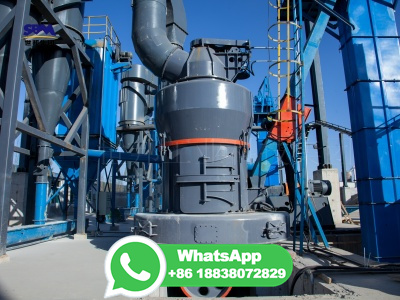
WEBJan 1, 2022 · The formation of hydrolyzed ferric iron (Fe (III)) as jarosite could limit the bioleaching of copper and significantly lower the dissolution rate of lowgrade chalcopyrite ore. Thus, to improve the rate through overcoming the hindered dissolution of chalcopyrite, this study investigated the influence of chloride addition into leaching lixiviant.
WhatsApp: +86 18203695377
WEBApr 1, 2023 · Bioleaching is commonly used to extract copper from the lowgrade ores or coppercontaining wastes due to the merits of environmentally friendliness and low cost (Yin et al., 2019a, Yin et al., 2021a; Li et al., 2014), however, bioleaching is impeded by its sluggish reaction kinetics (Yu et al., 2020; Guezennec et al., 2017).
WhatsApp: +86 18203695377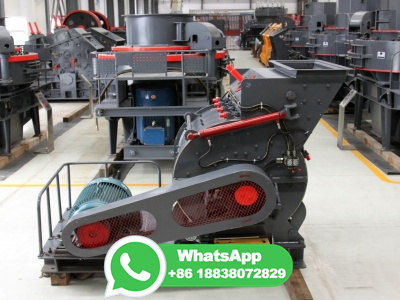
WEBApr 1, 2024 · Hence, the choice of elements and bacteria is crucial in the extraction of copper from electronic waste [44]. Providencia sp. JAT1, a heterotrophic strain isolated from lowgrade complex copper ore, was utilized for bioleaching lowgrade copper under alkaline conditions. This strain produces ammonia by using urea as a nitrogen source.
WhatsApp: +86 18203695377
WEBNov 15, 2022 · Usually, the copper ore grade is less than % and more than 70% consisted of primary copper sulfides, mainly bornite and chalcopyrite. The testing facility has been used to design the ROM bioleaching process at Radomiro Tomic operation, which will allow production of 10,000 t y −1 of copper, with an estimated recovery of .
WhatsApp: +86 18203695377
WEBAug 11, 2023 · Bioleaching uses the iron and sulfuroxidising metabolisms of acidophilic microorganisms to extract metals from ore. Sulfur oxidation is a complex, multistep process that is facilitated by a large number of enzymes, as demonstrated by the most complete model of sulfur oxidation in the extremophile A. ferrooxidans.
WhatsApp: +86 18203695377
WEBAug 27, 2020 · The process by which metals are dissolved from orebearing rocks using microorganisms is termed as microbial leaching. In present time, a number of ores cannot be economically processed with chemical methods because of their low metal content. Moreover, in course of separation of highergrade ores, large quantities of low .
WhatsApp: +86 18203695377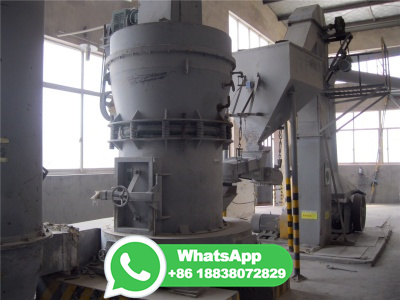
WEBMar 2, 2023 · Bioleaching is a biological metal recovery process from solid waste and is similar to hydrometallurgy in all aspects except the use of microorganisms for metal extraction. As a biohydrometallurgical process, bioleaching is simple, manageable, ecofriendly, highly effective and low operation cost and low energy demanding process.
WhatsApp: +86 18203695377
WEBThe process can be used on ores that are only to one percent copper, too little for conventional refining. The solution is then drained in to an electrolytic cell and copper extracted from it. In addition, studies show that zinc, nickel and cobalt can also largely be extracted by the process of bioleaching (Rawlings, Douglas, and Johnson 2007).
WhatsApp: +86 18203695377
WEBAug 1, 2023 · Nonetheless, 'speeding up' of a bioleaching process often involves a tradingoff of costs of implementing an intervention against the additional revenue through improved extraction. In the existing appliions of bioleaching, tank leaching of refractory gold ores and heap leaching of copper these tradeoffs have worked favourably.
WhatsApp: +86 18203695377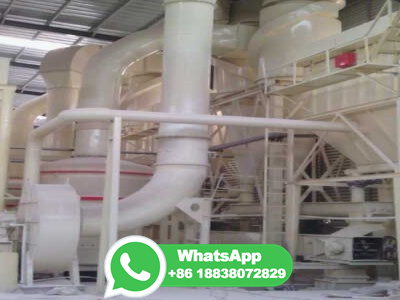
WEBBioleaching of Zinc, Nickel, and Cobalt. Natarajan, in Biotechnology of Metals, 2018 Abstract. Bioleaching principles, mechanisms, and appliions for extraction of zinc, nickel, and cobalt are illustrated. Recent commercially relevant developments in the biohydrometallurgy of zinc are discussed with respect to BRISA, HydroZinc, heap .
WhatsApp: +86 18203695377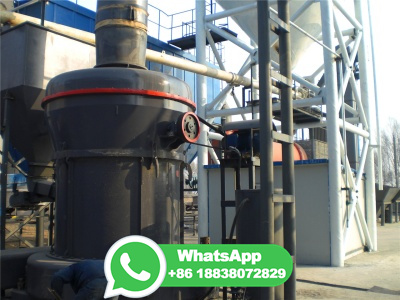
WEBDec 1, 2022 · 1. Introduction. As an environmentfriendly and economical technology, bioleaching has attracted great attention in the recovery of various valuable metals from ores and solid wastes [1].Copper is one of the most widespread and common heavy metals, and chalcopyrite is the main ore of copper in the world, contributing more than .
WhatsApp: +86 18203695377
WEBSep 1, 2020 · Appliion of ISR to copper extraction has been until now restricted to acid leaching of oxidized copper ore bodies which are naturally fractured and have good permeability, enabling good copper recoveries at low operating costs (Thoreau, 1998; M3 Engineering, 2013; M3 Engineering, 2017). However, copper sulfide ores are normally .
WhatsApp: +86 18203695377
WEBApr 17, 2009 · Alternatively, bioleaching (or biomining) by microorganisms is used to extract metals from ores by dissolving them into extremely acidic aqueous solution. Bioleaching is a natural process involving acidophilic bacteria and archaea, which have the ability to either oxidize metal sulfides or to oxidize reduced inorganic sulfur .
WhatsApp: +86 18203695377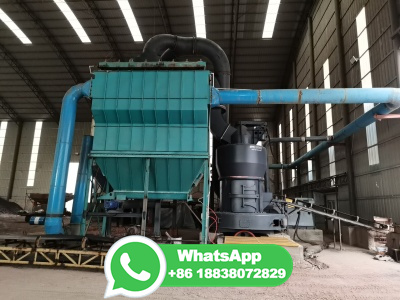
WEBOct 15, 2016 · Dump leaching was popularly used for the extraction of copper sulfide ores (Brierley 2008). Heap Leaching. Heap bioleaching is a speedily rising method for the extraction of base metals from sulfide minerals. Bioheaps are a big amount of lowgrade ores and effluents from extraction strategies that include trace quantities of .
WhatsApp: +86 18203695377
WEBOct 1, 2006 · Millions of tonnes of lowgrade ore and copperrich tailings await the development of an efficient and economic bioleach process for chalcopyrite (CuFeS 2).The bioleaching of chalcopyrite in situ and in dumps is a practical option only because the low and slow recoveries are countered by the low processing costs (Schnell, 1997).Not .
WhatsApp: +86 18203695377
WEBJan 1, 2022 · Spasova et al. (2006) examined the extraction of copper, gold, and silver from a heap consisting of five tons of polymetallic sulfide ore that had been crushed to less sizes than 10 mm. The main copperbearing mineral of the ore was chalcopyrite, while secondary copper sulfides, such as covellite and bornite, also were present.
WhatsApp: +86 18203695377![[PDF] Bioleaching for Copper Extraction of Marginal Ores from .](/kd8ezfh/243.jpg)
WEBJan 14, 2019 · The use of biotechnology to explore lowgrade ore deposits and mining tailings is one of the most promising alternatives to reduce environmental impacts and costs of copper extraction. However, such technology still depends on improvements to be fully applied in Brazil under industrial scale. In this way, the bioleaching, by Acidithiobacillus .
WhatsApp: +86 18203695377
WEBJan 2, 2019 · Additionally, for gold and copper extractions, bioleaching is used to extract cobalt, zinc, nickel, and uranium from lowgrade ores and industrial effluents. In this review, the fundamental process of bioleaching from lowgrade metal sulfide ores are discussed with emphasis on mechanism, types, pathways, techniques, and bioleaching .
WhatsApp: +86 18203695377
WEBJan 25, 2019 · Ag was extracted by cyanidation methods again in flasks as well as column leaching tests. Results showed that copper extraction is up to 95% when using bioleaching in the flask, 83% in the case of Fe3+ with sulfuric acid and 76% for sulfuric acid. Furthermore, subsequent extraction of Ag reaches 97% for bioleaching and 92% .
WhatsApp: +86 18203695377
WEBJan 1, 2024 · Direct DNA extraction from ore samples was not successful due to the low quantity of DNA obtained. Enrichment of the ore samples was carried out using two media DSM 670 and DSM 71. ... Consequently, introducing wellknown bacterial species into the copper bioleaching process becomes necessary to achieve a significant improvement .
WhatsApp: +86 18203695377
WEBOct 15, 2023 · Dong et al., 2011a, Dong et al., 2011b used ultraviolet light to irradiate Acidithiobacillus ferrooxidans and the mutagenic bacteria showed higher oxidation activity and bioleaching capability compared to the original strain and improved the extraction of copper from the tailings by about 17% and about 70% compared to chemical leaching ...
WhatsApp: +86 18203695377
WEBJun 1, 2005 · Bioleaching has been proposed as an alternative, lowcost, and environmentally friendly method utilizing microorganisms or fungi to solubilize metal sulfides as well as oxides (Gu et al., 2018 ...
WhatsApp: +86 18203695377
WEBMar 1, 2021 · For ores from jaw crusher with different particle sizes, the copper extraction of ore with finer granularity was obviously higher, and the final copper extractions were % and %, respectively. ... Therefore, an improved bioleaching process was achieved through agglomerating the ore from the HPGR in this study. 4. Conclusion.
WhatsApp: +86 18203695377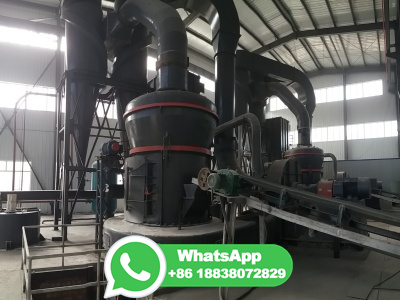
WEBApr 1, 2020 · As dump and heap bioleaching does not require large capital and operating costs, these processes are used to process lowgrade metal ores, including copper, zinc, nickel, and uranium [3,[8][9] [10 ...
WhatsApp: +86 18203695377
WEBFeb 1, 2014 · Bioleaching has been successfully applied in the commercial extraction of valuable metals such as copper [12] [13][14][15][16][17], uranium 18,19 and zinc 20 from lowgrade ores. Biooxidation has ...
WhatsApp: +86 18203695377
WEBJan 1, 2020 · An improved approach to extract copper from lowgrade copper ores by bioleaching was reported. Abstract Microcracks produced in the crushing stage could improve the permeability and diffusion of leaching solution within the ore particles, which would favor for the leaching process.
WhatsApp: +86 18203695377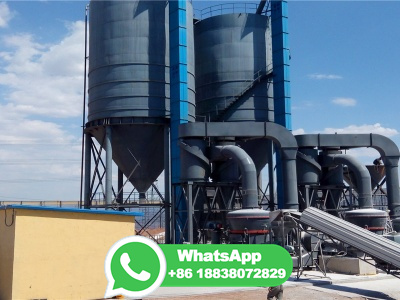
WEBJan 1, 2024 · The demand for copper increased obviously, yet the supply of highgrade and easytoextract copper resources has been dwindling (Khoshnevisan et al., 2012). In order to meet the increasing demand for copper, research focused on lowgrade copper ores, such as Chalcopyrite and Chalcocite, has attracted widespread attention.
WhatsApp: +86 18203695377
WEBAug 1, 2018 · Compared with the traditional pyrometallurgical process, copper bioleaching has distinctive advantages of high efficiency and lower cost, enabling efficiently extracts of valuable metal resources ...
WhatsApp: +86 18203695377
WEBJun 30, 2023 · Extracting copper from its ores. The method used to extract copper from its ores depends on the nature of the ore. Sulfide ores such as chalcopyrite ((CuFeS_2)) are converted to copper by a different method from silie, carbonate or sulfate ores. Chalcopyrite (also known as copper pyrites) and similar sulfide ores are the commonest .
WhatsApp: +86 18203695377